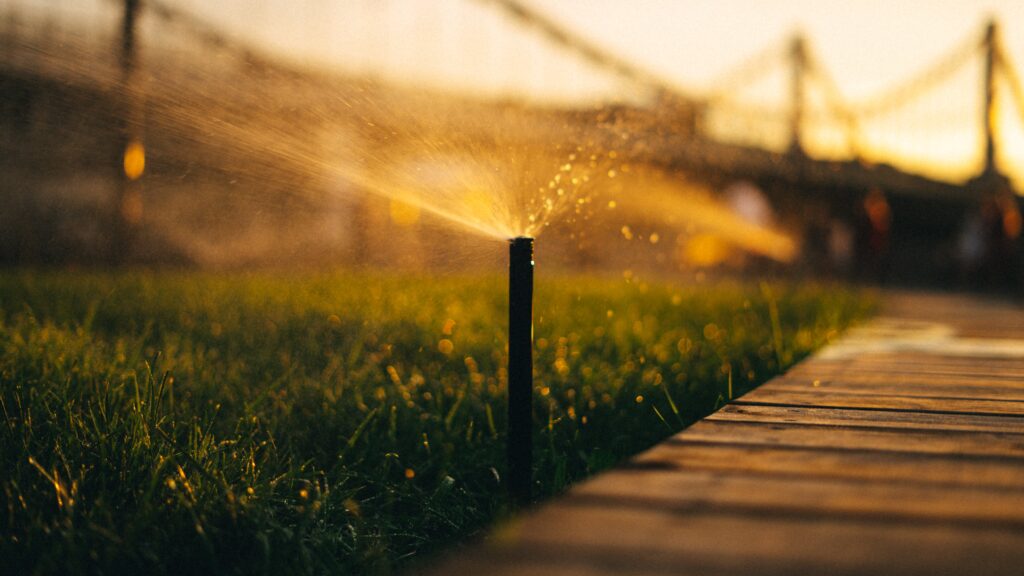11 Shocking Secrets to Buying the Perfect Sprinkler Heads
Table of Contents
- Sprinkler System Planning
- Sprinkler Selection by Lawn Size
- Calibrating Water Pressure and Flow
- Spray Pattern Advantages by Garden Type
- Lawn and Garden Composition Factors
- Conservation Through SMART Technology Integration
- Durability Considerations by Brand
- DIY or Call the Pros?
- Cost Saving Opportunities
- Weather-Proofing Your Sprinklers
- Regional Regulation Requirements
- Conclusion
A properly designed sprinkler system is invaluable for sustaining a lush, vibrant lawn. This comprehensive guide explores critical considerations from equipment selection to weather adaptation for crafting customized irrigation. Follow our detailed guide for creating an efficient watering oasis perfected for the needs of your grass, plants and garden.
Sprinkler System Planning
Constructing an optimal sprinkler system requires careful planning even before installation begins. Mapping your available water pressure, flow rate, lawn size and placement obstacles informs equipment selection and positioning. We’ll provide methodologies calculating essential metrics along with product recommendations excelling in target areas. With diligent planning, you can assemble a parts list tailored to blanket gardens with nourishing hydration.
Preliminary Steps
- Measure your lawn size, shape and obstructions
- Record water pressure from outdoor spigots
- Calculate water flow rate (see Section #III)
- Note sun exposure, shade zones, and soil variety
Appropriate Sprinkler Selection by Lawn Size
First up, let’s look at the types – pop-up, rotor, mist, and more. Each one has its superpowers for different gardens. We’ll help you find your garden’s perfect match!
Here are the different types of sprinkler heads, their benefits, and their features:
|
Choosing sprinklers aligned to the unique dimensions of your yard prevents overwatering cramped zones while providing adequate coverage to expansive ones. We’ll recommend models precisely aligning output and range to lawn proportions. Note spacing and overlap considerations maximizing consistency.
Compact Lawns and Gardens
Oscillating: : In small gardens or lawns, massive, wide coverage sprinklers are unnecessary. A stationary or oscillating sprinkler is more suitable, offering adequate coverage without excess.
Seek out sprinklers that have an adjustable spray pattern feature. This enables precise watering that conforms to the unique layout of your space, preventing water waste and ensuring optimal hydration.
Medium Lawns Up to 1 Acre
Medium lawns and gardens benefit from adjustable sprinklers. A rotor sprinkler with adjustable range and pattern can cater to varied garden and lawn sizes and even irregular shapes.
Uniform Watering: Choose a sprinkler head that guarantees consistent coverage, avoiding parched patches. Rotating or impact sprinklers, known for their adjustability, are excellent in evenly watering circular spaces.
Rotary Nozzles: Excellent stationary-to-rotary coverage across mid-size rectangular, circular or contoured plots from 2,000 – 35,000 sq ft.
Recommendation: Hunter PGP-ADJ 3/4″ Rotor Sprinkler
Key Features:
– Multi-stream multi-trajectory rotating jets
– Adjustable spray distance from 22’ up to 39’
– Pressure regulated jets prevent misting waste
– Durable corrosion-resistant construction
Large Lots Over 1 Acre
Large gardens require sprinklers with extensive reach. Gear-driven sprinklers like rotor and impact sprinklers are most effective, covering expansive areas thoroughly.
Multiple Units: In large yards and gardens, installing several sprinkler heads is often necessary to ensure complete irrigation. A professionally planned irrigation system can be the optimal approach for such extensive gardens.
Gear Driven Rotors: Single units traverse substantial ground exceeding manufacturer maximums from turf-friendly flexible nozzles.
Recommendation: Rain Bird 5004 Plus Rotor Pop-Up Sprinkler
Key Features:
– Spring-loaded pop-up with 4” rise
– Radius adjustment from 40 to 360 degrees
– Interchangeable nozzles adapt to weather or zone
– Heavy-duty dirt resistant seal
Navigating Complex Layouts:
Irregularly shaped gardens pose unique challenges, necessitating a mix of sprinkler types to reach every area effectively. For example, combine rotor sprinklers for open spaces with stationary ones for tight, curved areas.
Zoning Systems: Implementing a zoning system allows separate control over distinct garden sections, enabling you to tailor irrigation schedules and volumes to meet the specific requirements of each zone.
Recommendation: Orbit B-hyve Sprinkler System Controller
Calibrating Water Pressure and Flow
Perfectly hydrated lawns hinge on understanding output metrics – measured in pressure (PSI) and delivery speed known as flow rate (GPM).
Measuring Water Pressure (PSI)
The optimal water pressure for most sprinklers is 30-50 pounds per square inch (PSI). Measuring PSI is a simple and straightforward process. Simply attach a water pressure gauge to a faucet near where your sprinkler system connects to your home’s water supply.
If you find your water pressure is too low, installing a booster pump may be necessary. If you find your water pressure is too high, installing a water pressure regulator may be necessary.
Calculating Flow Rate (GPM)
Flow rate indicates water volume delivered per minute. This is another crucial factor in sprinkler system design planning and also simple and straightforward.
Equipment needed: A large container marked in gallons or liters and a watch/stopwatch (your smartphone will do).
Process: Position the bucket under the spigot nearest where your sprinkler system will be connected and open the faucet completely. Turn on your stopwatch and allow the container to fill for 60 seconds. Measure the collected quantity and divide gallons by 60 seconds. The amount of water collected in one minute is your flow rate in gallons per minute (GPM)
Repeat twice for the most accurate measurement and record the result. This number will help you determine the number of sprinklers you can use and how long you should run them.
Once you have your flow rate, you can plan your sprinkler system more effectively, ensuring that you have the right amount of water coverage for your garden or lawn without wasting water.
Importance of Correct Flow Rate
The flow rate helps you understand how many sprinkler heads you can run simultaneously and how long it will take to adequately water your lawn. An incorrect flow rate can lead to either overwatering or underwatering.
Using the flow rate results to determine your sprinkler needs involves a few calculations and considerations.
Here’s a step-by-step guide on how to utilize your flow rate measurement to plan your sprinkler system:
- Deciding Which Sprinkler Heads to Purchase
Each sprinkler head type has a specific GPM (gallons per minute) rating, indicating how much water it uses. Find out the GPM rating for the sprinkler heads you plan to use. This information is usually provided by the manufacturer.
- Calculating the Number of Sprinklers:
– Divide the flow rate of your water supply (measured in GPM) by the GPM rating of the sprinkler heads. This will give you the maximum number of sprinkler heads that can be run at the same time without losing efficiency.
– For example, if your flow rate is 10 GPM and each sprinkler head uses 1 GPM, you can run up to 10 sprinkler heads simultaneously.
- Consider Your Lawn Area
– Measure the total area of your lawn or garden that needs watering. Sprinkler heads have different coverage areas, use the table above as reference. Ensure the total coverage area of all sprinkler heads matches or slightly exceeds your lawn area.
- Zone Your Sprinkler System:
– If the number of sprinklers you need exceeds what your flow rate can support, consider zoning your sprinkler system. This means dividing your lawn into separate sections (zones) and watering them one at a time.
– Zoning is also helpful if different areas of your lawn have different watering needs.
- Adjust for Water Pressure:
– Remember that water pressure affects sprinkler performance. If your water pressure is lower or higher than the ideal range for your sprinklers, you may need to adjust the number of sprinklers per zone or choose different sprinkler heads.
- Plan for Overlap:
– Ensure that the spray patterns of adjacent sprinkler heads overlap slightly. This overlap helps prevent dry spots. A common guideline is for the spray from one sprinkler head to reach the base of the next sprinkler head.
- Review and Adjust:
– After installation, observe your sprinkler system in action. Look for signs of over or under-watering and adjust the number of sprinklers or their positioning as necessary.
– Consider environmental factors like sun exposure, wind, and slope, which can affect watering efficiency, and adjust your sprinkler setup accordingly.
- Maintenance Check:
Regularly check your sprinklers for clogs or damage, as these can affect flow rate and water distribution.
By carefully planning and adjusting your sprinkler system based on your specific flow rate and garden needs, you can achieve efficient watering, ensuring that your lawn and plants are well-hydrated while conserving water and reducing waste.
- Adjusting Your Sprinklers:
Make sure your sprinkler heads are matched to your system’s flow rate. Some sprinkler heads like those listed below allow for flow rate adjustments, which can be useful in customizing the output to your lawn’s needs.
Spray Pattern Advantages by Garden Type
Different patterns serve different purposes and are suited for various lawn shapes and plant types. Let’s explore how to select the ideal spray pattern for your garden’s unique layout.
Circular or Rotary Patterns
- Best for Large, Open Areas: Circular patterns are great for covering large, open spaces like big lawns. Rotary or rotor-type sprinklers typically produce this pattern.
- Even Coverage: They distribute water in a rotating, circular motion, ensuring even coverage over a wide area.
Square and Rectangular Patterns
- Ideal for Specific Lawn Shapes: If your lawn or garden bed is square or rectangular, these patterns ensure that every corner gets watered without waste.
- Oscillating Sprinklers: These are often best for square or rectangular patterns, moving back and forth to cover the area evenly.
Mist and Fine Spray Patterns
- For Delicate Plants and Seedlings: Gentle mist patterns are perfect for watering delicate plants, seedlings, and flower beds without overwhelming them.
- Reduced Soil Erosion: Fine sprays reduce the risk of soil erosion and are less likely to disturb small plants or seeds.
Drip and Bubbler Patterns
- Direct Watering to Roots: Drip systems and bubblers deliver water directly to the base or root of the plants, making them highly efficient for individual plants, trees, or dense plant beds.
- Water Conservation: This pattern is excellent for conserving water, as it reduces evaporation and runoff.
Adjustable Patterns
- Flexibility for Mixed Gardens: Adjustable sprinklers allow you to change the pattern as needed, which is perfect for gardens with a mix of plant types and lawn areas.
- Adaptability: Easily switch between different patterns to cater to the varying needs of your lawn and garden throughout the seasons.
Tips for Optimizing Spray Patterns
- Know Your Garden’s Layout: Understand the shape and size of your garden areas. Choose a pattern that covers the area efficiently without overreaching onto paths or driveways.
- Consider Wind Patterns: Be aware of typical wind directions in your garden. Certain spray patterns are more susceptible to wind drift, leading to uneven watering.
- Overlap for Uniformity: Ensure that the edges of spray patterns from different sprinkler heads slightly overlap to avoid dry spots.
- Regular Adjustments: Periodically check and adjust your sprinkler heads to maintain the correct pattern, especially after lawn mowing or garden maintenance activities.
By matching the spray pattern to your garden’s specific needs, you can ensure thorough and efficient watering, leading to a healthier, more vibrant outdoor space. Remember, the right pattern not only waters your plants but also contributes to water conservation.
Lawn and Garden Composition Factors
Certain equipment options excel when addressing the distinct hydration requirements arising from soils, elevation contours or vegetation densities across your property. We explain how to employ gear compatibility.
Soil Considerations
Every plant and soil type has its own unique watering requirements. By understanding these needs, you can choose a sprinkler system that provides the optimal amount of water, enhancing plant health and soil condition. Here’s how to decode what your garden is saying and select the best sprinkler heads for your green companions.
Understanding Soil Types
Clay Soil: Retains water and drains slowly. Use sprinkler heads with a low application rate to avoid waterlogging.
Sandy Soil: Drains quickly, requiring more frequent watering. Sprinklers with a higher application rate can provide the necessary moisture.
Loamy Soil: Well-balanced and ideal for most plants. Standard sprinkler heads usually work well for loamy soils.
Catering to Plant Types
Lawn and Grass Areas: Rotary or oscillating sprinklers are great for evenly covering large grassy areas.
Vegetable Gardens: Drip irrigation systems are ideal, as they deliver water directly to the roots without wetting the leaves, reducing disease risk.
Flower Beds: Gentle spray patterns from misting or soft spray sprinklers help avoid damage to delicate flowers and petals.
Shrubs and Trees: Bubbler or drip systems are effective, providing deep watering that encourages strong root growth.
Customizing Water Delivery
Adjustable Flow and Pattern: Look for sprinklers that allow you to adjust both the flow rate and the spray pattern, offering flexibility for different plant and soil needs.
Zoning Systems: Consider installing a zoning system in your irrigation setup, allowing you to water different areas of your garden according to their specific needs.
Timers and Sensors: Use timers and moisture sensors to automate watering based on the actual needs of your plants, preventing over or under-watering.
Water Conservation Techniques
Mulching: Applying mulch around plants can help retain soil moisture, reducing the need for frequent watering.
Watering at the Right Time: Water in the early morning or late evening to minimize evaporation.
Regular Maintenance: Check your irrigation system regularly for leaks or blockages to ensure efficient water usage.
Signs to Watch For
Overwatering: Yellowing leaves, especially at the base of the plant, can indicate too much water.
Underwatering: Wilted, dry, or crispy leaves suggest that your plants need more water.
Soil Inspection: Regularly check the soil moisture at a few inches deep. If it’s consistently dry or overly soggy, adjust your watering routine accordingly.
Remember, the right irrigation system is a dialogue with your garden, ensuring that each plant gets the exact amount of water it needs to thrive.
Conservation Through SMART Technology Integration
Economical Watering Strategies
Water conservation is not just beneficial for the environment; it also has a direct impact on your wallet
Choosing Water-Efficient Sprinkler Heads
Drip Irrigation Systems: Ideal for direct watering at the root zone, minimizing evaporation and runoff. These sprinkler types are perfect for gardens, flower beds, and detailed landscaping.
Rotary Nozzles: These provide uniform water distribution, reducing the need for overlapping watering zones and thus saving water.
-Soaker Hoses: Great for specific areas or garden rows, delivering water slowly and directly to the soil, reducing waste.
Smart Watering Practices
Water at Optimal Times: Water early in the morning or late evening to reduce water loss due to evaporation. Avoid watering on windy days.
Use Timers and Controllers: Automate your sprinkler system with timers and smart controllers. Some features to consider is the ability to adjust watering based on weather conditions, soil moisture levels, and plant requirements.
Adjust According to Weather: Reduce or skip watering on rainy or cooler days.
Efficient Sprinkler Placement and Maintenance
Correct Placement: Position sprinklers to avoid watering non-garden areas like driveways and sidewalks.
Regular Maintenance: Check your sprinkler system regularly for leaks, broken parts, or misaligned heads.
Seasonal Adjustments: Change your watering schedule with the seasons. Plants generally need less water in the cooler months.
Landscape Considerations
Choose Native Plants: Native plants are adapted to your local climate and typically require less water.
Mulching: Use mulch around plants to retain soil moisture and reduce the need for frequent watering.
Lawn Care: Mow your lawn to a higher setting. Longer grass shades the soil which can reduce evaporation and can extend watering periods.
Monitoring Water Usage
Track Your Water Bill: Keep an eye on your water bill to monitor your usage. A sudden increase can indicate a leak or inefficient watering.
Use a Rain Gauge: Measure how much water your garden receives from rainfall and adjust your watering accordingly.
Efficient watering is a balance between meeting your garden’s needs and being mindful of water consumption. By choosing the right sprinkler heads and adopting water-saving practices, you can maintain a lush garden while reducing your water bill.
SMART Recommendation: Rachio 3 Smart Sprinkler Controller
**Key Features:**
- WORRY-FREE WATERING – Rachio tailors your watering schedule to the specific needs of your yard and plants, providing the right amount of water no matter the landscape. Ensure a beautiful yard and lower your water bill at the same time!
- NO MONTHLY FEES – Rachio comes complete and ready to use, without any extra charges or app subscription fees.
- EXCLUSIVE WEATHER TECHNOLOGY – Patented Weather Intelligence automatically skips unnecessary watering with features like rain skip, wind skip, freeze skip, and more.
- CONTROL FROM YOUR PHONE – Manage your watering from anywhere with the easy-to-use app. Run sprinklers, set & view upcoming schedules, and see your estimated outdoor water usage.
- FAST & EASY INSTALLATION – DIY installation in 30 minutes or less with no special tools needed. Compatible with 99% of existing sprinkler controllers.
- #1 SMART SPRINKLER CONTROLLER – Rachio invented the smart sprinkler category and continues to be the most trusted controller on the market. Only Rachio offers smart schedules that include plant type, soil type, sun exposure, and more.
Durability Considerations by Brand
Some of the most durable sprinkler brands are:
- Rain Bird: Rain Bird is renowned for its high-quality, durable products and is a popular choice among professionals and homeowners.
- Hunter Industries: Hunter sprinklers are well-regarded for their robust construction and reliable performance and offer a wide range of products.
- Toro: Toro is known for manufacturing durable and efficient sprinkler systems that withstand various environmental conditions.
- Orbit: Orbit offers a range of easy-to-use and long-lasting sprinkler heads and controllers.
- K-Rain: K-Rain produces durable, professional-grade sprinkler system parts.
- Gardena: Gardena offers a range of garden watering products in addition to sprinkler heads that are known for quality and durability.
DIY or Call the Pros?
According to HomeGuide.com, the average total cost of installing a new sprinkler system ranges from $1,800 to $5,200. They also mention that the cost per zone installed is around $500 to $1,000, with most homes requiring 3 to 5 zones.
Deciding whether to take on sprinkler system installation as a DIY project or to call in professional help is a significant decision. Here’s a detailed look at both options to help you make an informed choice.
DIY Installation: Embracing the Challenge
Pros of DIY:
Cost Savings: Doing it yourself can potentially save you money on labor costs.
Learning Experience: It’s an opportunity to learn about your garden’s layout and irrigation needs.
Flexibility: You can work at your own pace and make adjustments as you go.
Cons of DIY:
Time-Consuming: Installation can be time-intensive, especially if you’re new to it.
Potential for Mistakes: Without professional experience, you might encounter issues that can be costly to fix.
Complexity: Depending on your lawn’s size and landscape, the installation can be quite complex.
When to Consider DIY:
– If you have a smaller or simpler yard.
– If you have basic plumbing and landscaping skills.
– If you enjoy hands-on home improvement projects.
Hiring Professionals: Expertise at Work
Pros of Professional Installation:
Expertise and Experience: Professionals bring knowledge and efficiency to the job.
Quality Assurance: Pros are more likely to get the installation right the first time.
Time-Saving: A professional team can complete the job quicker than a DIY approach.
Cons of Professional Installation:
Cost: Hiring professionals will be more expensive than doing it yourself.
Scheduling: You’ll need to work around the availability of the contractors.
Less Personal Control: You’ll have less hands-on control over the installation process.
When to Call the Pros:
– If your lawn is large or has a complex landscape.
– If you lack the time or inclination for a DIY project.
– If you want the assurance that comes with professional expertise.
Good DIY candidates include:
– Front lawn retrofits or new home installations without intricate landscaping requirements
– Rectangular lots without grading complexities
– Flexible budgets allowing for supplemental professional help if meeting obstinate challenges extending timelines
– Ability to invest duration required for mastery of basic concepts and implementation techniques
- Front lawn retrofits or new home installations without complex landscaping.
- Rectangular lots without grading complexities.
- Flexible budgets that allow for professional help if needed.
- Willingness to invest time in learning basic installation concepts and techniques.
DIY Resources:
Tutorials at sources like SprinklerWarehouse detail processes for measuring PSI ratings, calculating pattern throw distances and installing compression versus threaded piping for lasting water security.
Cost Saving Opportunities
You needn’t sacrifice quality while working within limited irrigation budgets. Consider the following value alignments compatible with modest financial resources.
Buying Off Season
Shop winter clearance sales as this equipment sells at substantial discounts ahead of summer growing seasons. Big box retailers like Lowes and Home Depot offer up to 30% or more off name brands alongside provided discount codes stacking for additional savings on already reduced prices.

Testing Newer Brands
Lesser known manufacturers often provide extended component warranties while smartly adapting proven methodologies. Testing savings substantiated through community verified reviews ensures functionality without paying premiums of mature brands like RainBird before the technology proved itself over seasons of use.
Reuse Existing Infrastructure
Adding zones, smart sensors and controllers augments capabilities while avoiding large projects.
Weather-Proofing Your Sprinklers
Selecting the right sprinkler head types for different weather conditions is crucial for maintaining an efficient and effective irrigation system. Here’s a guide to the best sprinkler head types for various weather scenarios like rain, sun, and snow:
Rainy Weather
1. Sensor-Equipped Sprinkler Heads:
– Sprinkler heads integrated with rain sensors automatically shut off the system during rainfall, preventing water wastage.
– Ideal for all sprinkler types, including rotors and spray heads.
2. Drip Irrigation Systems:
– Less affected by rainfall since they deliver water directly to the root zone, reducing surface runoff.
– Particularly useful for plant beds, vegetable gardens, and landscaped areas.
Sunny and Hot Weather
1. Rotary Nozzles or Rotators:
– Provide uniform water distribution, ensuring all areas of your lawn receive adequate moisture even in intense sun.
– Ideal for large, open spaces like lawns and playing fields.
2. Drip Irrigation Systems:
– Excellent for minimizing evaporation losses that are common in sunny conditions.
– Best for targeted watering of plants, trees, and shrubs.
3. Soaker Hoses:
– Good for deep watering of gardens and flower beds, ensuring water penetrates to the roots, essential in dry, sunny weather.
Snowy and Cold Weather
1. Pop-Up Sprinkler Heads:
– In regions with occasional snow, pop-up sprinklers that retract below ground level are less prone to damage from snow and freezing temperatures.
– Ensure they are winterized properly to prevent freezing and cracking.
2. Drip Irrigation Systems:
– Less susceptible to damage from snow compared to above-ground systems.
– Useful for winterizing gardens, as they can be insulated against freezing.
General Considerations
– Adjustable Sprinkler Heads: Having the ability to adjust the range and pattern can be beneficial in all weather types to suit the specific watering needs at the time.
– Weather-Resistant Materials: Choosing sprinkler heads made from durable, weather-resistant materials will enhance their longevity and reliability in various weather conditions.
– System Winterization: In areas with harsh winter conditions, it’s important to winterize your sprinkler system to prevent damage due to freezing. This often involves draining the system and, in some cases, using air compressors to blow out residual water.
Check this link for more winterization tips and a free downloadable checklist
By selecting the appropriate sprinkler head types for different weather scenarios, you can maintain an effective and efficient irrigation system year-round, ensuring that your lawn and garden stay healthy regardless of the weather conditions.
Regional Regulation Requirements
Every region has its own set of rules and regulations regarding water usage, particularly for irrigation systems. These rules can vary widely depending on local climate, water availability, and environmental policies. It’s essential to understand and adhere to these regulations to avoid fines and contribute to sustainable water use. Here’s how you can ensure your sprinkler system is up to code.
Research Local Ordinances
– Contact Local Authorities: Reach out to your city’s water supply or environmental protection agency for information on water usage regulations.
– Community Resources: Check community websites or local government portals for guidelines on irrigation systems.
Specific Regulations to Look For
– Watering Schedules: Many areas impose watering schedules, limiting the days and times you can water your lawn.
– Rain Sensor Requirements: Some regions require sprinkler systems to have rain sensors to prevent watering during or after rainfall.
– Drought Restrictions: In areas prone to drought, there may be strict limitations on water use for lawns and gardens.
Choosing Compliant Sprinkler Heads
– Water-Efficient Models: Opt for sprinkler heads that are labeled as water-efficient, such as those certified by the EPA’s WaterSense program.
– Drip Irrigation: In areas with strict water use regulations, drip irrigation systems can be a good choice as they are highly efficient and reduce water waste.
– Adjustable Sprinklers: Sprinklers that allow you to adjust the range and flow can help you adhere to local water conservation rules.
Smart Irrigation Controllers
– Weather-Based Controllers: Consider installing smart irrigation controllers that adjust watering schedules based on weather conditions.
– Soil Moisture Sensors: These sensors can reduce water usage by providing water only when the soil is dry.
Staying Updated
– Regular Check-Ins: Water regulations can change, especially in response to shifting environmental conditions. Stay informed by regularly checking for updates.
– Community Groups: Join local gardening or environmental groups where members often share updates and tips on complying with local regulations.
Documentation and Permits
– Permits for Installation: In some areas, you might need a permit to install or modify your sprinkler system. Check this before starting any installation.
– Keeping Records: Keep records of your system’s specifications and any modifications, as this can be helpful if regulations change or if you’re audited.
Conclusion
We hope this guide provided you a comprehensive overview of key considerations when purchasing sprinkler heads. Pay particular attention to engineering specifications like water pressure and flow rate early on to ensure adequate coverage, uniformity, and component longevity. Planning ahead paves the way for successful irrigation supporting verdant curb appeal perfection for years through seasonal fluctuations to come.
As an Amazon Associate, we earn from qualifying purchases. Affiliate links help support our work and allow us to continue providing free content. If you make a purchase through an affiliate link, we receive a small percentage of the sale at no extra cost to you.
The DIY repair advice on this site is for informational purposes only. The content aims to be helpful but cannot guarantee success or substitute professional advice. Any repairs involve some risk, so readers assume all liability and responsibility for their actions. Safety should be the top priority. If unsure about any procedure, first consult a qualified professional to determine suitability.
- Sprinkler Rebate Guide
- Slash Your Water Bill and Save the Planet with Sprinkler Rain Sensors!
- How to Revive a Lawn: Bringing Your Drought-Stricken Lawn Back to Life
- Sprinkler Repair Costs: The Shocking Truths You Need to Know!
- Gardeners Won’t Believe These Raised Bed Irrigation System Hacks!
- 11 Shocking Secrets to Buying the Perfect Sprinkler Heads
- A Comprehensive Guide on How to Adjust the Rainbird 5000 Sprinkler Head
- The Complete Step-by-Step Guide to Design a Sprinkler System
- Residential Sprinkler Head Types: A Comprehensive Guide
- Thank You For Subscribing





